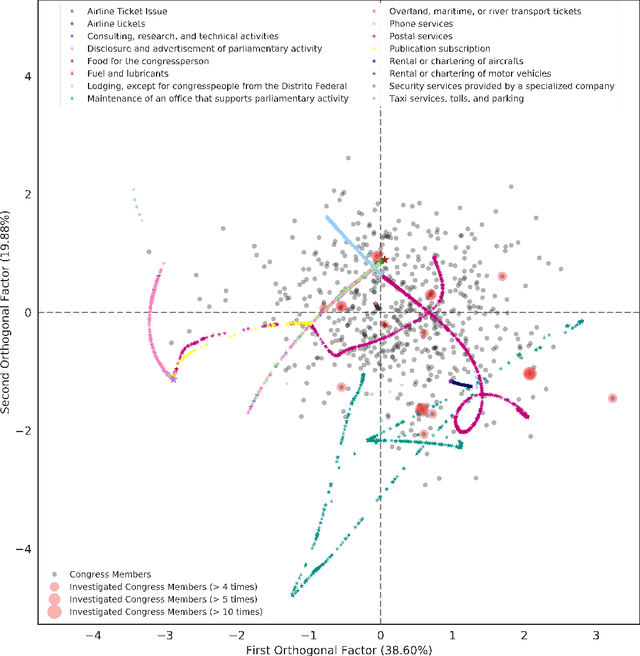Andre P. Calmon
Correspondence Analysis of Government Expenditure Patterns
Nov 29, 2018
Abstract:We analyze expenditure patterns of discretionary funds by Brazilian congress members. This analysis is based on a large dataset containing over $7$ million expenses made publicly available by the Brazilian government. This dataset has, up to now, remained widely untouched by machine learning methods. Our main contributions are two-fold: (i) we provide a novel dataset benchmark for machine learning-based efforts for government transparency to the broader research community, and (ii) introduce a neural network-based approach for analyzing and visualizing outlying expense patterns. Our hope is that the approach presented here can inspire new machine learning methodologies for government transparency applicable to other developing nations.
 Add to Chrome
Add to Chrome Add to Firefox
Add to Firefox Add to Edge
Add to Edge